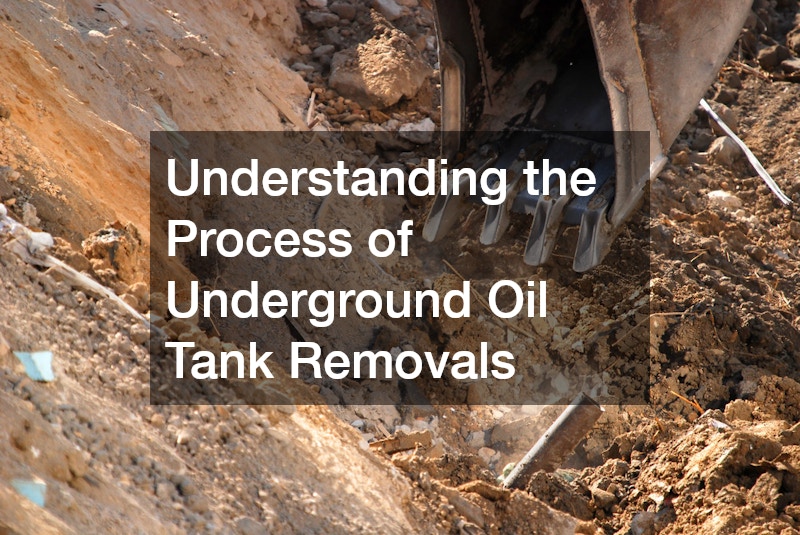The removal of underground oil tanks is a critical process for homeowners and property managers. These tanks may have been used for heating in past decades, but can pose significant environmental and safety risks if not managed properly. While the task may seem daunting, understanding the process of underground oil tank removals can alleviate much of the anxiety. This article delves into the details of what this process involves, why it’s necessary, and how it impacts both property value and the environment.
Whether you’re facing the task yourself or simply want to learn more, read on for a comprehensive overview.
Why Underground Oil Tank Removals are Necessary
Underground oil tanks can become hazardous over time due to corrosion and leaks. These issues can lead to soil contamination, which can then affect groundwater resources and local ecosystems. Consequently, this pollution can pose serious health risks to humans, including respiratory problems and other illnesses. Removing such tanks is necessary to prevent these environmental and health hazards. Moreover, many municipalities have regulations requiring the removal of old tanks, ensuring that community water sources remain unpolluted and safe for consumption.
The structural integrity of underground oil tanks diminishes with age, increasing the likelihood of accidental spills. Natural processes like soil movement can exacerbate this degradation. By removing old tanks, property owners reduce the risk of unexpected environmental cleanup costs, which can be substantial and often not covered by insurance. Furthermore, the presence of such tanks can lower property values due to perceived risks by potential buyers. Removing them not only safeguards the environment but also serves as a prudent financial decision.
Effective tank removal involves a series of well-regulated steps to mitigate any potential hazards. When a tank leaks, cleaning up the contamination can be complex and time-consuming. Moreover, regulatory compliance procedures must be followed to the letter to avoid legal ramifications. Each location might have its own set of regulations dictating the methods and timelines for removal. By following these imposed guidelines, property owners contribute positively to community health and safety.
The Process of Underground Oil Tank Removals
The removal process begins with a thorough site assessment conducted by licensed professionals. They evaluate the tank’s condition, size, and location to devise an appropriate removal strategy. Environmental testing might be needed to assess whether any contaminants have already leached into the surrounding soil. If contamination is confirmed, remediation strategies are concurrently planned to restore the site post-removal. A strategic plan ensures that the tank is removed without causing undue stress to the property’s ecosystem.
Once planning is complete, excavation begins—the most visible part of the process. Workers will carefully dig around the tank, ensuring they do not inadvertently damage other underground utilities. During excavation, safety precautions are adhered to, as improperly handling fossil fuels can pose explosion hazards. The oil remaining in the tank is often drained for safe disposal or recycling before the tank is physically removed from the ground. This step is crucial for preventing any remaining product from spilling during the extraction process, thereby minimizing environmental impact.
Post-extraction, the site undergoes further testing to ensure no residual contamination is present. If any pollution is detected, the affected soil must be treated or replaced to remove harmful chemicals. Documentation of the removal process is typically required to prove compliance with local regulations. This documentation is important for property records, particularly when selling the property, as it provides evidence that the necessary steps were taken to ensure environmental safety. By meticulously following these steps, both the environment and property value are protected.
Impact on Property Value and Environment
The removal of obsolete underground oil tanks can significantly enhance property values. Buyers often view properties with old tanks as risky investments due to potential future liabilities. Once a tank is removed, these risks are mitigated, making the property more appealing to buyers who prioritize environmental safety and compliance. A certified removal can, therefore, be a selling point, offering peace of mind to prospective owners concerned about environmental issues and unforeseen costs. This increased marketability frequently results in faster sales at more competitive prices.
Environmental benefits are a substantial reason behind advocating for underground oil tank removals. The process not only eliminates an outdated oil storage system but also prioritizes remediation of past environmental damage. Cleaning up soil and groundwater ensures that these vital resources remain uncontaminated for future generations. Proactive removal anticipates potential leaks rather than reacting to them, thereby safeguarding ecosystems before pollution can become an intractable problem. In this respect, tank removals serve as both a corrective and preventive environmental measure.
Ultimately, removing underground oil tanks is a socially responsible action that aligns with broader environmental and community safety goals. While the task might initially appear as a significant expenditure, the long-term advantages are clear. Not only does it foster a healthier living environment, but it also alleviates the potential for legal and financial liabilities. The peace of mind that comes with ensuring safety and compliance is invaluable, for it tackles latent issues before they escalate. Through understanding and executing this essential process, property owners can significantly contribute to environmental conservation and sustainability.




